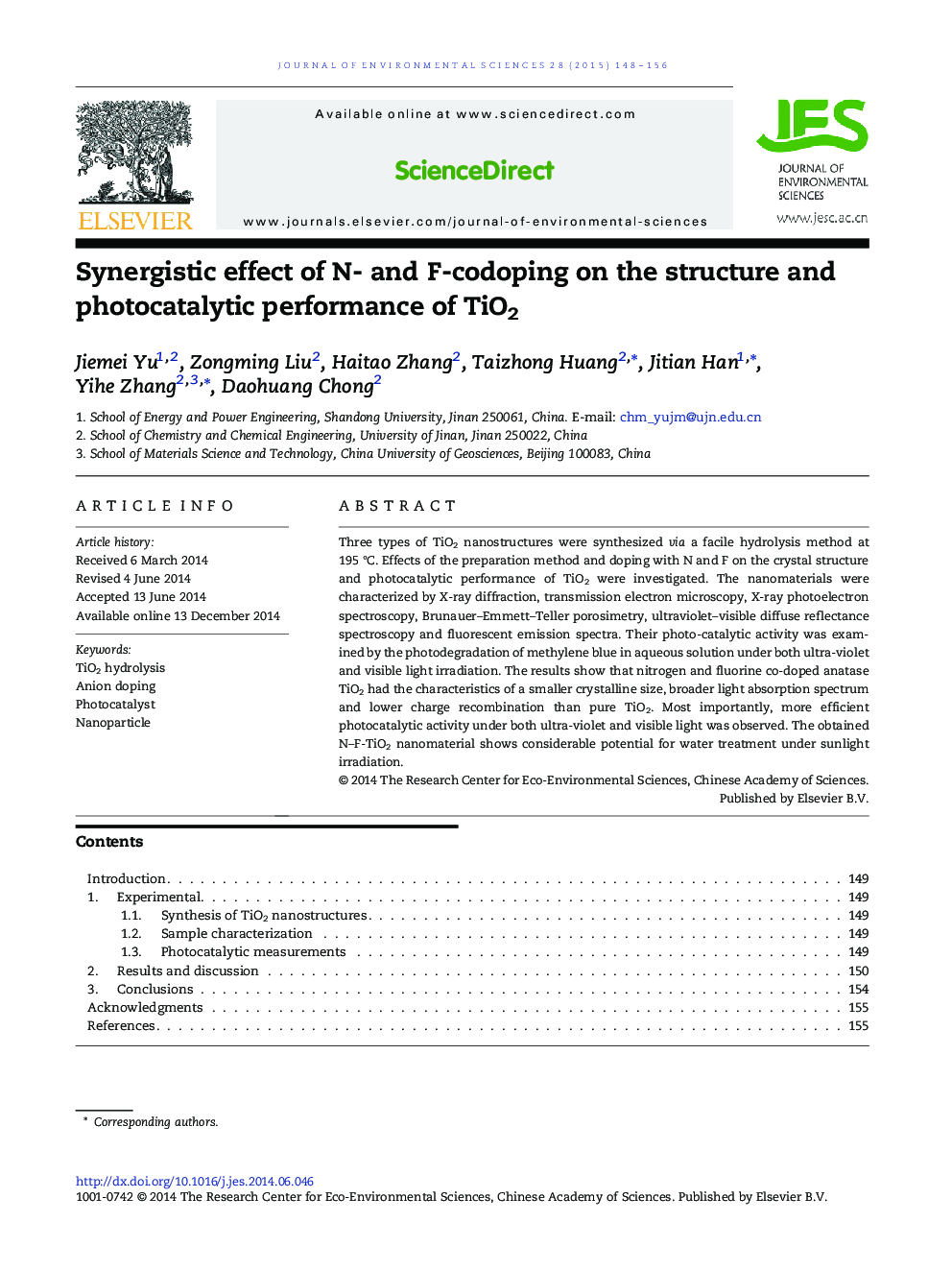| Article ID | Journal | Published Year | Pages | File Type |
|---|---|---|---|---|
| 4454248 | Journal of Environmental Sciences | 2015 | 9 Pages |
Three types of TiO2 nanostructures were synthesized via a facile hydrolysis method at 195 °C. Effects of the preparation method and doping with N and F on the crystal structure and photocatalytic performance of TiO2 were investigated. The nanomaterials were characterized by X-ray diffraction, transmission electron microscopy, X-ray photoelectron spectroscopy, Brunauer–Emmett–Teller porosimetry, ultraviolet–visible diffuse reflectance spectroscopy and fluorescent emission spectra. Their photo-catalytic activity was examined by the photodegradation of methylene blue in aqueous solution under both ultra-violet and visible light irradiation. The results show that nitrogen and fluorine co-doped anatase TiO2 had the characteristics of a smaller crystalline size, broader light absorption spectrum and lower charge recombination than pure TiO2. Most importantly, more efficient photocatalytic activity under both ultra-violet and visible light was observed. The obtained N–F-TiO2 nanomaterial shows considerable potential for water treatment under sunlight irradiation.
